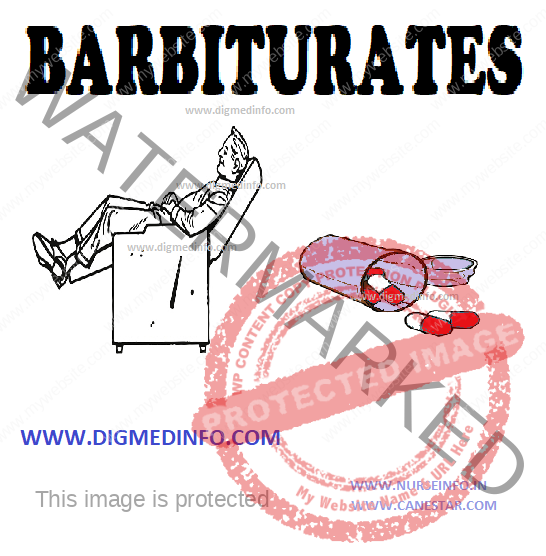BARBITURATES – General Features, Clinical Features and Treatment
GENERAL FEATURES
Till recently, barbiturates were the most common drugs used for suicide. Accidental poisoning is seen in epileptics, psychiatric patients and children who get regular prescription for these drugs.
The most widely used barbiturate is phenobarbitone and it is used as an anticonvulsant. Absorption and metabolism of phenobarbitone are slow. About 10% of the drug is excreted in urine unchanged. The lethal dose for adult is about 5 gm. Simultaneous administration of alcohol aggravates its effects.
CLINICAL FEATURES
Central nervous, respiratory and cardiovascular systems are affected the most. Drowsiness, slowing of respiration and hypotension follow. Pupils are small and react to light.
In severe poisoning, when medullary centers are depressed, the pupils are dilated and fixed, which indicates a poor prognosis. Tendon reflexes are sluggish or absent. Necrosis of sweat glands and bullous lesions over the skin develop in a few as a hypersensitive reaction. These lesions heal slowly.
Diagnosis can be confirmed by detection of barbiturates in the gastric contents and estimation of barbiturate in blood.
Treatment
In addition to general measures, forced alkaline diuresis and dialysis are helpful. Bemegride (megimide) is considered to be a specific antidote but subsequent research has disproved this assumption.
Repeated doses of activated charcoal and hemoperfusion are the modalities described. Since pneumonia is a fatal complication, these patients should be observed for a week till recovery is complete.


